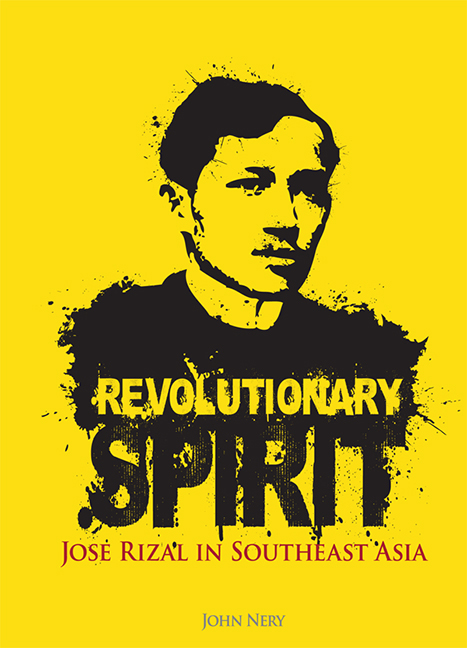Book contents
- Frontmatter
- Dedication
- Epigraph
- Contents
- Foreword
- Message
- Preface
- Acknowledgements
- INTRODUCTION The Uses of Error A Rizal Chronology
- 1 TURNING POINTS
- 2 “THE VERY SOUL OF THIS REBELLION”
- 3 DOCTOR RIZAL
- 4 “HALFBLOED”
- 5 “NO MARX OR LENIN”
- 6 UNDER THE SOUTHERN SUN
- 7 THE HOPE OF MILLIONS IN ASIA
- 8 “HIS NAME IS SWEET IN OUR MEMORY”
- 9 THE MYTH BUSTERS
- 10 “A GREAT HISTORICAL EXPERIMENT”
- Epilogue
- Appendices
- References
- Index
- Frontmatter
- Dedication
- Epigraph
- Contents
- Foreword
- Message
- Preface
- Acknowledgements
- INTRODUCTION The Uses of Error A Rizal Chronology
- 1 TURNING POINTS
- 2 “THE VERY SOUL OF THIS REBELLION”
- 3 DOCTOR RIZAL
- 4 “HALFBLOED”
- 5 “NO MARX OR LENIN”
- 6 UNDER THE SOUTHERN SUN
- 7 THE HOPE OF MILLIONS IN ASIA
- 8 “HIS NAME IS SWEET IN OUR MEMORY”
- 9 THE MYTH BUSTERS
- 10 “A GREAT HISTORICAL EXPERIMENT”
- Epilogue
- Appendices
- References
- Index
Summary
The revolutionaries, those who actually took to the battlefield, held Rizal in great esteem. An unusual token of this abiding respect may be found in the instructively erroneous first paragraph of General Artemio Ricarte's memoirs, written some twenty years after the end of hostilities.
Start of the Insurrection. — The insurrection of the members of the Katipunan began on the day Dr Jose Rizal was cast into prison in Fort Santiago, Intramuros. [Ricarte 1992: 3]
The facts are less congenial. Rizal returned to Manila from his exile in Dapitan on 6 August 1896. He spent almost an entire month, “detenido pero no preso — detained but not a prisoner” (Rizal 1953: 55), on board the Spanish cruiser Castilla. He left for Spain on board the Isla de Panay on 4 September. He arrived in Barcelona on 3 October, but did not disembark until 6 October, when he was escorted to the notorious Montjuich prison. (By then, as he noted in his diary, he had gone 64 days without touching land.) He spent several hours in cell Number 11, before being presented to the ranking official, Eulogio Despujol (as it happens, the same man who banished him to Dapitan), and then was marched off to the Colon on the same day, to be taken back to Manila as a prisoner. He arrived on 3 November, and it was only then that he was “cast into prison” in Fort Santiago.
The revolution, on the other hand, began on 29 August.
Ricarte, a brigadier general of the Magdiwang Council of the Katipunan in Cavite and afterwards captain-general of the new revolutionary government, earned fame for his bravery and fighting skill. His nom de guerre was the fearsome and fitting “Vibora,” or Viper. Opposed to the American occupation until his death in 1945, he was the first ranking revolutionary general to publish his memoirs — in serial form beginning in 1922, in book form in 1927.
His account of the Revolution, Himagsikan Nang Manga Pilipino Laban sa Kastila, or Revolution of the Filipinos Against the Spanish, began with a familiar device. In the same way that early chroniclers of the Katipunan linked Bonifacio's founding of the revolutionary organization to the day Rizal was arrested in 1892, Ricarte began his chronicle by linking the start of the Revolution to the day Rizal was (said to have been) imprisoned in 1896.
- Type
- Chapter
- Information
- Revolutionary SpiritJose Rizal in Southeast Asia, pp. 87 - 102Publisher: ISEAS–Yusof Ishak InstitutePrint publication year: 2011

